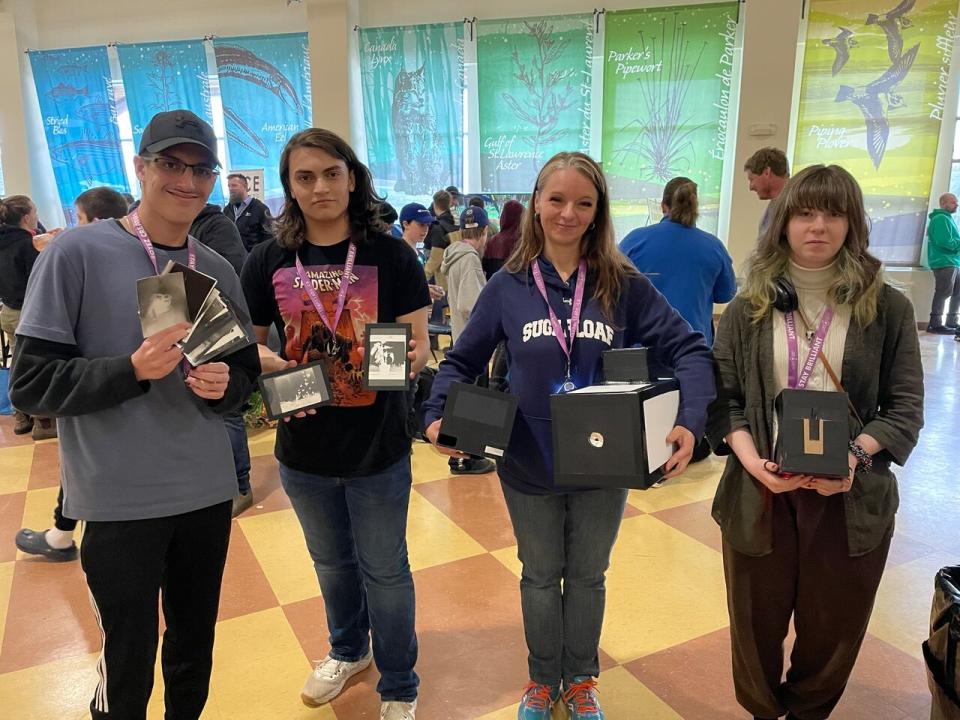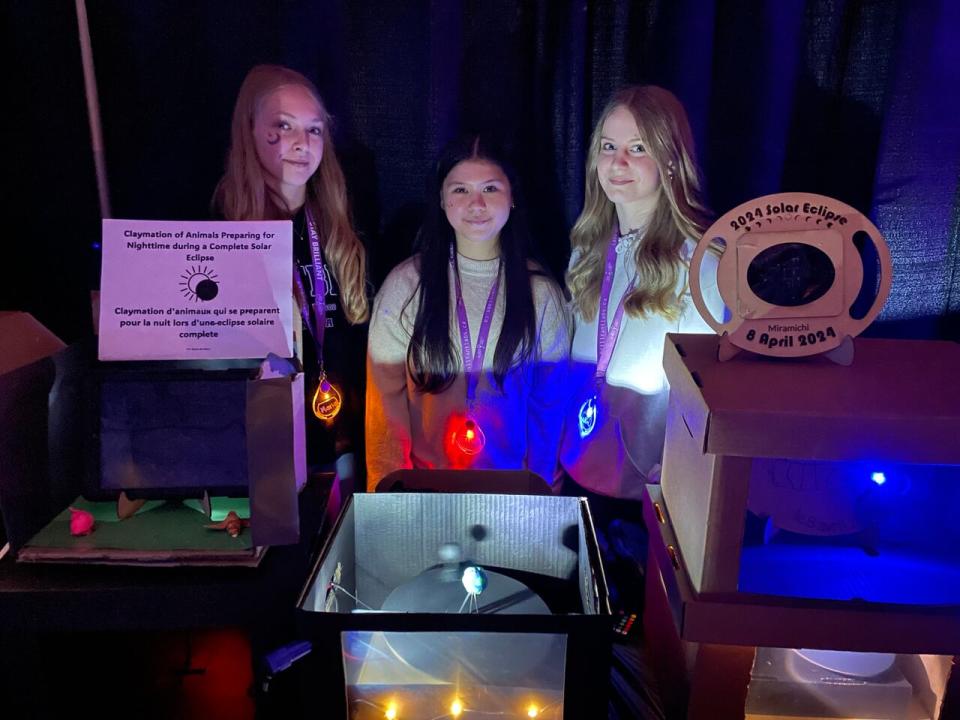At a crowded science fair, Kolton Collins spreads out a brightly coloured parachute and inspects a foam box fitted with a camera and tracking device — all part of a project set to take flight for a once-in-a-lifetime astronomical event.
The Grade 10 student at Blackville School, about 150 kilometres north of Moncton, has been working with classmate Nick Hallihan to create a high-altitude research balloon for Monday’s solar eclipse. It will take to the skies, soaring more than a kilometre to capture video, photos and data of the rare phenomenon.
“This is one of the biggest events of our age, and this is going to be the only solar eclipse that we’re going to 100 per cent experience in our lifetimes,” Collins said.
“Doing it ourselves and getting footage of outer space is pretty cool.”
WATCH | See an eclipse-themed science fair:
Collins and Hallihan are part of dozens of student teams from across New Brunswick working on projects tied to the total solar eclipse.
They presented at a light-and-dark-themed science innovation fair in Miramichi on Thursday, an event organized by the New Brunswick Department of Education, the non-profit Brilliant Labs and the Anglophone North School District.
The fair drew more than 600 students from Atlantic Canada to the city, one of several communities situated in the path of totality for the solar eclipse.

Students from Sugarloaf Senior High School in Campbellton made pinhole cameras in preparation for the eclipse. From right to left: Blaze Parker, Caleb Parent, teacher Andrea Powers and Calley Pollock. (Alexandre Silberman/CBC)
In anticipation of Monday’s event, some New Brunswick schools will be dismissing students early and passing out viewing glasses.
Hallihan, a Grade 9 student, said the eclipse has sparked a greater interest in science and astronomy. He’s excited to finally see it happen, after hearing his science teacher talk about it for months.
“It’s very far away and it’ll be pretty awesome to get our own footage of it that we can review and say, ‘We did that back in high school,'” he said.
Andrea Powers, a visual arts teacher, was at the science fair with some of her students from Sugarloaf Senior High School in Campbellton. They made pinhole cameras after a discussion about safe ways to view the eclipse.
The contraption, also known as a camera obscura, is a box with a small hole on one end that projects the image onto a piece of paper.
“It’s really cool to be able to look at the science aspect and also to work in the visual arts, as well as this monumental natural phenomenon that’s going to happen,” Powers said.

Maria Hamilton, Ella Harris and Onika Gourdine, students at Max Aitken Academy in Miramichi, show an eclipse model they built at a science fair on Thursday. (Alexandre Silberman/CBC)
The main room of the science fair was dark, allowing projects with colourful lights to stand out.
Students from Max Aitken Academy, a middle school in Miramichi, were showing off models that demonstrate orbits during the solar eclipse.
Maria Hamilton, a Grade 8 student, said the animation took about three weeks to put together, using clay to build the earth and moon, and a light for the sun.
She got a pair of viewing glasses from school and is getting ready to watch the real-life event from home on Monday.
“I’m really excited to see it,” she said.
Crédito: Link de origem





Comentários estão fechados.